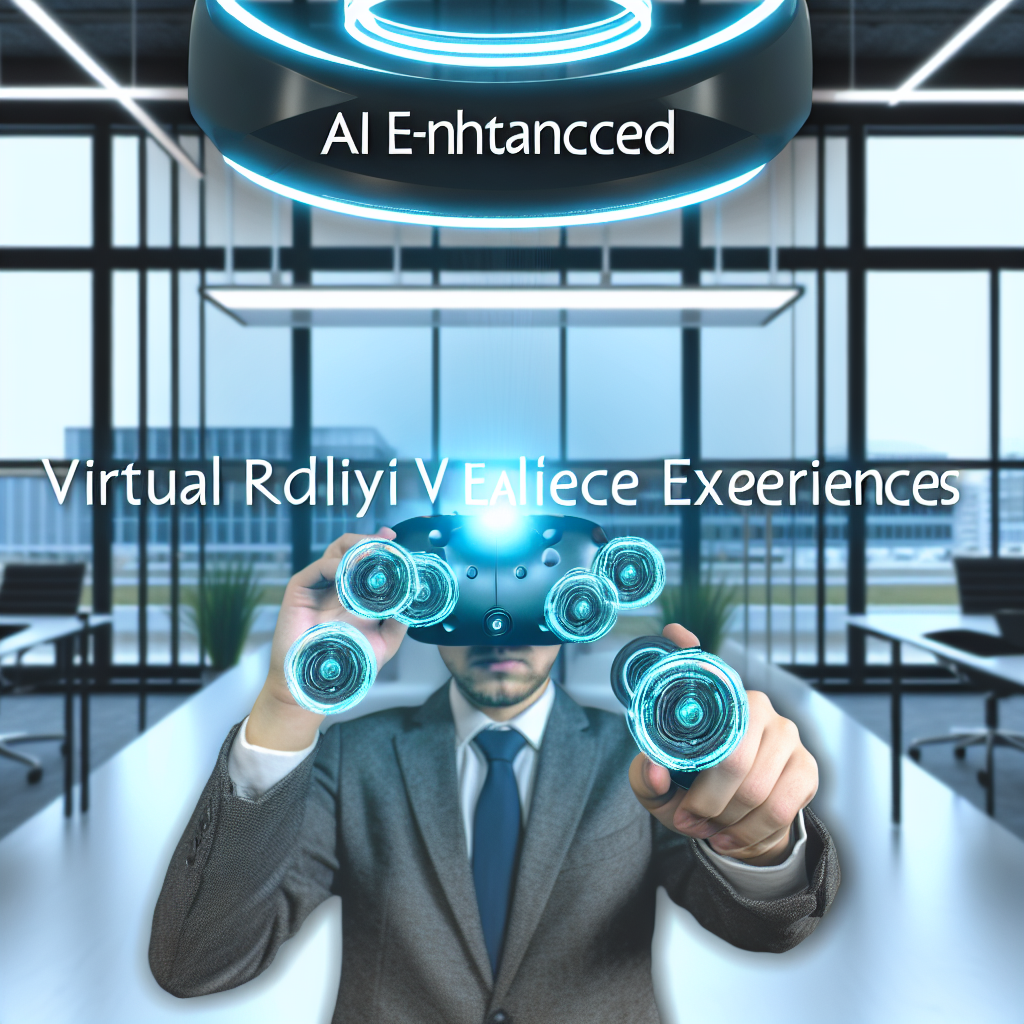-
- AI-Enhanced Virtual Reality Experiences
- Understanding AI-Enhanced Virtual Reality
- Configuration Steps for AI-Enhanced VR
- Step 1: Choose Your VR Platform
- Step 2: Select an AI Framework
- Step 3: Develop Your VR Environment
- Step 4: Integrate AI Features
- Step 5: Test and Optimize
- Practical Examples of AI-Enhanced VR
- Best Practices for Implementing AI in VR
- Case Studies and Statistics
- Conclusion
AI-Enhanced Virtual Reality Experiences

As technology continues to evolve, the integration of Artificial Intelligence (AI) into virtual reality (VR) is transforming how users interact with digital environments. AI-enhanced VR experiences are not only making virtual worlds more immersive but also more responsive and personalized. This guide will explore the configuration steps, practical examples, best practices, and case studies related to AI-enhanced VR, providing you with actionable insights to implement these technologies effectively.
Understanding AI-Enhanced Virtual Reality
AI-enhanced VR combines the immersive qualities of virtual reality with the adaptive capabilities of artificial intelligence. This synergy allows for more dynamic interactions, personalized content delivery, and improved user engagement. By leveraging AI, developers can create environments that learn from user behavior, adapt scenarios in real-time, and provide tailored experiences that were previously unimaginable.
Configuration Steps for AI-Enhanced VR
To create an AI-enhanced VR experience, follow these configuration steps:
Step 1: Choose Your VR Platform
- Evaluate popular VR platforms such as Oculus Rift, HTC Vive, or PlayStation VR.
- Consider the hardware requirements and compatibility with AI tools.
Step 2: Select an AI Framework
- Choose an AI framework that suits your project needs, such as TensorFlow, PyTorch, or Unity ML-Agents.
- Install the framework following the official documentation.
Step 3: Develop Your VR Environment
- Use game engines like Unity or Unreal Engine to create your VR environment.
- Incorporate 3D models, textures, and animations to enhance realism.
Step 4: Integrate AI Features
- Implement AI algorithms for user behavior analysis, such as reinforcement learning.
- Utilize natural language processing (NLP) for voice interactions within the VR environment.
Step 5: Test and Optimize
- Conduct user testing to gather feedback on the AI interactions.
- Optimize performance by adjusting AI parameters and VR settings based on user input.
Practical Examples of AI-Enhanced VR
Here are some real-world examples of AI-enhanced VR applications:
- Training Simulations: Companies like Boeing use AI-enhanced VR for pilot training, allowing trainees to experience realistic flight scenarios that adapt based on their performance.
- Gaming: Games like Half-Life: Alyx utilize AI to create intelligent NPCs that react dynamically to player actions, enhancing immersion.
- Therapeutic Applications: VR therapy programs for PTSD use AI to tailor scenarios that help patients confront their fears in a controlled environment.
Best Practices for Implementing AI in VR
To ensure the success of your AI-enhanced VR project, consider the following best practices:
- Focus on user experience: Prioritize intuitive controls and seamless interactions.
- Ensure data privacy: Implement robust data protection measures when collecting user data for AI training.
- Iterate based on feedback: Regularly update your VR experience based on user feedback and technological advancements.
Case Studies and Statistics
Several studies highlight the effectiveness of AI-enhanced VR:
- A study by PwC found that VR training can lead to a 40% improvement in employee performance compared to traditional training methods.
- Research from Stanford University demonstrated that VR therapy can reduce anxiety levels by up to 60% in patients with phobias.
Conclusion
AI-enhanced virtual reality experiences are revolutionizing how we interact with digital environments, offering personalized and immersive experiences that adapt to user behavior. By following the configuration steps outlined in this guide, leveraging practical examples, and adhering to industry best practices, you can create compelling VR applications that harness the power of AI. As this technology continues to evolve, staying informed and adaptable will be key to maximizing its potential in your projects.